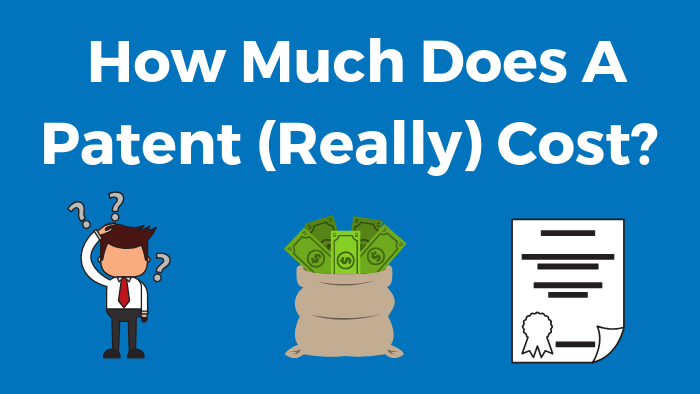How Much Does a Patent Cost?

Table of Contents
Whether you’re an inventor, a small business owner, or part of a bigger company, knowing how much it costs and how to go about getting your idea patented is very important. Let’s say you’ve come up with a new tool that makes gardening a breeze, and now you want to make sure no one else can claim your idea as their own. This guide is here to help you understand why getting a patent is a good move, how you can get one, and what kinds of things you can patent, all while explaining the costs involved in simple terms.
Some Famous Patents
- The Light Bulb: Although often credited solely to Thomas Edison, the light bulb was actually developed by several inventors. Edison’s most significant contribution was a patent for an improved method for producing the carbon filaments, making bulbs longer-lasting and more practical for everyday use.
- The Telephone: Alexander Graham Bell was granted the patent for the electric telephone in 1876. His invention fundamentally changed how people communicate, making it possible to hear someone’s voice from miles away.
- The Computer Algorithm: Written by mathematician John Mauchly and physicist J. Presper Eckert, the patent for the first computer algorithm was filed as part of their development of the ENIAC, one of the earliest digital computers. This patent represents a foundational moment in computer science.
- The Digital Camera: The first patent related to capturing digital images instead of film was filed by Texas Instruments in 1972. This technology has revolutionized the way we capture and share images today.
- Smartphone Technology: Modern smartphones involve numerous patents for various technologies. One notable patent is for the method of multi-touch input, which has transformed the way devices are interacted with and has been integral to the functionality of modern smartphones.
Why Patent?
Protecting Your Innovation
A patent provides the inventor exclusive rights to their invention, preventing others from making, using, selling, or distributing the patented product without permission. This protection is critical as it allows inventors to secure a market advantage, potentially leading to significant financial rewards.
Attracting Investment
Patents can enhance your business’s valuation, making it more attractive to investors and partners. They are often seen as a sign of innovation and credibility, indicating a serious commitment to developing unique products or services.
Revenue Through Licensing
Owning a patent can also open up opportunities for licensing agreements, where other entities pay you to use your patented invention. This can be a significant source of revenue without the need to directly produce or sell the product yourself.
How to Patent
Step 1: Conduct a Patent Search
Before applying for a patent, it is crucial to conduct a thorough search to ensure your invention is novel. This involves checking the United States Patent and Trademark Office (USPTO) database and other international databases to see if there is an existing patent similar to your invention.
Step 2: Determine the Type of Patent
There are three main types of patents:
- Utility patents for new and useful processes, machines, articles of manufacture, or compositions of matter.
- Design patents for new, original, and ornamental designs for an article of manufacture.
- Plant patents for new and distinct, invented or discovered asexually reproduced plants.
Step 3: Prepare and File a Patent Application
Preparing a patent application is a detailed and critical task. It requires clear and concise claims of your invention and professional drawings. Many inventors choose to hire a patent attorney to ensure their application meets all legal requirements.
Step 4: Respond to USPTO Inquiries
After submission, a USPTO examiner will review your application. This process can involve several rounds of inquiries and responses to clarify aspects of your invention and its patentability.
What Things Can Be Patented?
Innovative Products
Any new and useful process, machine, manufacture, or composition of matter, or any new and useful improvement thereof, may qualify for a utility patent.
Unique Designs
Original designs for a manufactured item can be protected under a design patent. This includes the shape or surface ornamentation applied to products that doesn’t affect their function.
Novel Plants
If you have invented or discovered and asexually reproduced a distinct and new variety of plant, you can protect it under a plant patent.
How Much Does a Patent Cost?
Filing Fees
The cost of obtaining a patent can vary significantly depending on the type of patent:
- Utility patents: These are generally more expensive, with filing fees ranging from $300 to $800 for small entities.
- Design patents: Less complex, and therefore less costly, with filing fees usually around $200 for small entities.
Attorney Fees
Hiring a patent attorney or agent can add significant cost, usually ranging from $1,000 to $10,000 or more, depending on the complexity of the patent application and the attorney’s rates.
Maintenance Fees
Utility patents require maintenance fees to keep the patent in force, paid at 3.5, 7.5, and 11.5 years after the patent is granted. These fees can range from a few hundred to several thousand dollars.
Overall Costs
The overall cost of obtaining a patent can typically range from $5,000 to $15,000 or more, including the USPTO fees and attorney fees. The exact cost will depend on the complexity of the invention and the type of patent.
Patents Or Trademarks?
When it comes to protecting intellectual property, both patents and trademarks serve crucial but distinctly different roles. Understanding their differences, applications, and benefits can help you determine which is more suitable depending on your needs.
What is a Patent?
A patent is a right granted to an inventor by a sovereign authority, such as a government, which permits the inventor to exclude others from making, using, selling, or importing an invention for a limited period of time, typically 20 years from the filing date of the patent application. Patents cover new inventions (process, machine, manufacture, composition of matter) or improvements to existing ones. The patent for the personal computer, as granted to companies like IBM, covered specific internal technologies that were novel at the time, such as the method for data processing or circuit designs.
What is a Trademark?
A trademark is a sign capable of distinguishing the goods or services of one enterprise from those of other enterprises. Trademarks are concerned with company branding and can include any word, name, symbol, or device used in commerce. Unlike patents, as long as a trademark is in use and its registration is maintained with proper fees, it can last indefinitely. The Nike “Swoosh” logo is a trademark that identifies their products and distinguishes them from other sports apparel. It’s a symbol of brand identity that consumers recognize worldwide.
Comparing Patents and Trademarks
Patents protect an invention’s functionality and design, which means that no competitor can legally create or sell an invention that is substantially similar to the patented one. This allows inventors to capitalize on their innovations. Trademarks protect brand identity, not the product or service itself, but the branding that distinguishes it in the market. This helps build brand loyalty and a company’s reputation.
Patents are granted for a limited time, typically 20 years. After this period, the patented technology can be used by anyone. This period allows inventors to recover their investments and potentially profit from their creations. Trademarks can last indefinitely, as long as they are in use and the registration is renewed periodically. This provides ongoing protection of the brand as long as it remains in commerce.
Patents can be extremely valuable as they provide a temporary monopoly on a product’s production and sales, often resulting in significant profits, particularly in industries like pharmaceuticals or technology. For instance, the patent for the drug Viagra was immensely profitable for Pfizer until it expired. Trademarks can also hold immense value as they are tied to the brand’s reputation and consumer loyalty. For example, the trademark for Coca-Cola is one of the most recognized globally and is crucial to the company’s valuation.
Which is Better?
The choice between patenting an invention or trademarking a brand element depends entirely on what you need to protect. If you have developed a new product, technology, or process that you want to exclusively manufacture and sell, a patent would be necessary. However, if your focus is on building a brand and ensuring that no one else can profit from your brand identity or mislead your customers by using a similar brand name or logo, then a trademark is essential.
In many cases, businesses will need both patents and trademarks to fully protect their intellectual assets. For example, a tech company might patent a new smartphone technology while also trademarking the logo and brand name under which the smartphone is sold. This dual approach ensures both the product and the brand are protected.
We Are Here For You!
If you still need help to know how much does a patent cost then, for more information feel free to contact us today. We’re here to help!

Sissie Hsiao
Sissie Hsiao is the Vice President of Content Marketing and an innovator at heart. With a deep expertise in law, she specializes in the cutting-edge application of trademark and copyright. Sissie's unique blend of legal knowledge and marketing acumen drives her passion for developing forward-thinking content strategies that protect and promote creative works.




